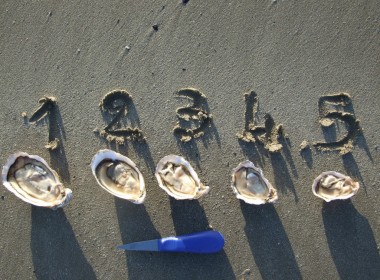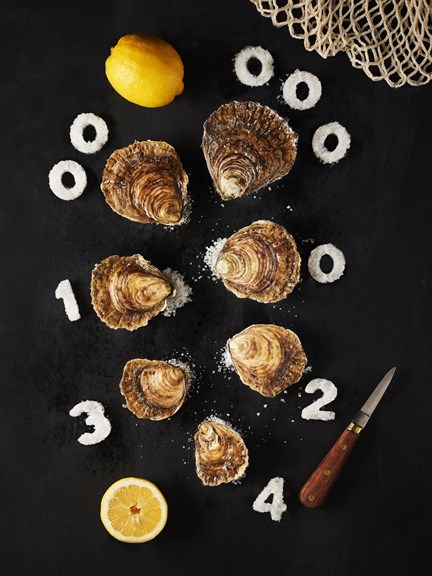Which size to choose between...
Caliber 1 or caliber 5?

The breeding cycle is a great combination of the best natural conditions of the sea and the very long experience of oyster farmers. From the moment the oyster is picked up by nature during the summer months, an average of three to four years pass before it reaches your table. During this cycle, using special sizing machines, are divided into calibers (sizes) that classify them by size and weight, according to two different measurement scales between flat oysters and concave oysters.
The most common oyster is certainly the concave one, the first thing you need to remember is that the scale starts from the 5 caliber and ends with the 0 caliber. The 5 identifies the smallest oysters, weighing about 30-45 g, you can also distinguish them with the name of papillon, or cocktail oysters. The most common caliber is instead the number 3, usually if not specified, this size is automatically mentioned. The caliber 2 is the one that aficionados prefer, each oyster weighs about 86-110g, it is considered the maximum expression of the product as the magnum for wines, as the oyster reaches its maximum ripeness. Caliber 1 and 0 are the most extreme calibers, impressive to see and most difficult to find, a real peculiarity.

If you are a lover of flat oysters, including the famous Belon oyster, you should know that the calibration concept is the same as concave but the approach with which to choose them is different. The scale starts from caliber 6, very small oysters weighing about 20 grams. Since the flat oyster is less meaty, in our opinion the first interesting size to taste is the 0 caliber, almost equivalent to the 3 caliber in concave oysters. After this dimension, the more "zeros" increase the more the oyster increases, until it becomes huge and rare in the 0000 caliber.
Knowing how to choose the size of the oyster is important to define one's taste, even further appreciate the product. Imagine that you've always eaten well-cooked meat and find that you love rare cooking.
Choose small sizes (number 4 or 5 for the concave ones or 1 or 2 for the flat ones) if you appreciate the taste of the oyster but do not like a bite that is too persistent, it is perfect to get closer to this world.
Choose an intermediate size (number 3 for concave, number 0 for flat) if you are an oyster lover and like a traditional approach. This caliber is the right balance between fleshiness and salinity.
Choose a large caliber (number 2, 1 and 0 for the concave and number 0, 00 and 000 for the flat) if the oyster is more than a passion. The crunchiness and emotions that over-sized oysters can give you are unique!

